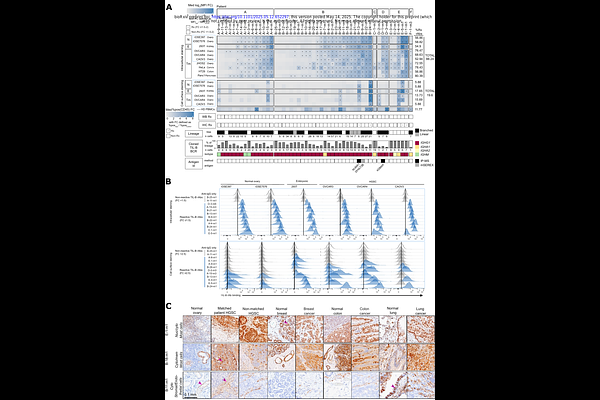Prognostically favorable immune responses to ovarian cancer are distinguished by self-reactive intra-epithelial plasma cells

Prognostically favorable immune responses to ovarian cancer are distinguished by self-reactive intra-epithelial plasma cells
Banville, A. C.; Laumont, C. M.; Singh, K.; Gladwin, B.; Dedora, J.; Mitchell, L.; Wang, J.; Miranda, A.; Mateyko, B.; Chavez, E. A.; Negri, G. L.; Cheng, S. W. G.; Smazynski, J.; Milne, K.; Wright, K.; Lampard, M.; Gierc, N.; Hamilton, P. T.; Spencer, S. E.; Kalaria, S.; Oostenbroek, T.; Negrea Puskas, V.; Steidl, C.; Morin, G. B.; Nathoo, F.; Nelson, B. H.
AbstractTumor-infiltrating B cells (TIL-Bs) are strongly associated with patient survival; however, the underlying mechanisms are poorly understood. Using integrated single-cell and spatial biology approaches, we defined at clonal resolution the molecular phenotypes, tumor reactivity patterns, and microenvironmental locations of TIL-Bs in high-grade serous ovarian cancer (HGSC). Prognostic benefit was associated with a TIL-B-rich tumor microenvironment with marked infiltration of malignant epithelium by plasma cells (PCs). PCs spanned five molecular phenotypes; exhibited high rates of somatic hypermutation and clonal expansion; and expressed predominantly IgG1 antibodies recognizing broadly expressed nuclear, cytoplasmic, and cell surface self-antigens. Many PC-derived antibodies were polyreactive. Self- and poly-reactive TIL-Bs penetrated tumor epithelium and stroma and expressed interferon-stimulated genes, indicating strong in situ activation. The self- and poly-reactive nature of TIL-B responses, reminiscent of autoimmune disease, may provide a means for the immune system to combat tumor heterogeneity and could potentially be harnessed for more effective immunotherapy.